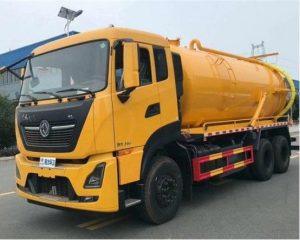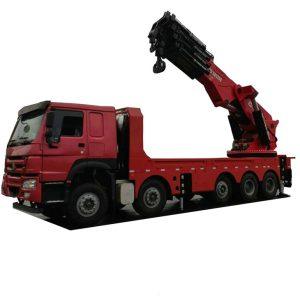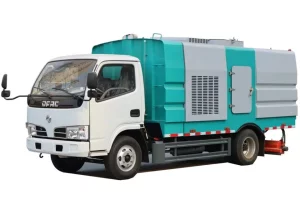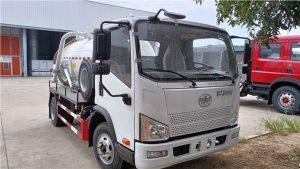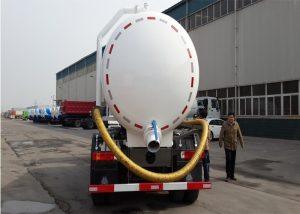Monday to Saturday - 8:00 -17:30
Understanding Bucket Capacity of Construction Dump Trucks
Introduction
In the construction industry, the efficiency and productivity of a project often depend on the type of equipment used, especially when it comes to transportation. One key piece of equipment, the construction dump truck, plays a pivotal role in moving materials like dirt, gravel, and debris. A crucial aspect of a dump truck’s functionality is its bucket capacity. Understanding the bucket capacity of construction dump trucks is essential for project managers, operators, and construction companies to make informed decisions regarding the type of dump truck to use, calculate transport efficiency, and manage costs effectively.
What is Bucket Capacity?
Bucket capacity refers to the volume of material that a dump truck’s bucket can hold. This capacity significantly influences the overall performance of the truck in terms of load efficiency, time taken for transportation, and operational costs. Bucket capacity is typically measured in cubic yards or cubic meters and varies based on the truck’s design and intended use.
Factors Affecting Bucket Capacity
Several factors can influence the bucket capacity of dump trucks:
- Truck Type: Different types of dump trucks (standard, articulated, and transfer) have varying designs and capacities.
- Size and Design: The physical dimensions and shape of the bucket affect how much material it can carry.
- Material Density: Heavier materials will limit the volume that can be safely loaded into the bucket.
Types of Dump Trucks and Their Capacities
Standard Dump Trucks
Standard dump trucks are commonly used in construction projects for transporting loose materials. Their bucket capacity typically ranges from 10 to 16 cubic yards.
| Truck Model | Bucket Capacity (Cubic Yards) |
|---|---|
| Ford F-750 | 12 |
| Mack Granite | 14 |
| Peterbilt 367 | 16 |
Articulated Dump Trucks
These trucks are designed for off-road applications and can handle rough terrain. Their bucket capacity usually ranges from 25 to 30 cubic yards, making them suitable for large-scale projects.
| Truck Model | Bucket Capacity (Cubic Yards) |
|---|---|
| Volvo A40G | 27 |
| Caterpillar 730 | 30 |
Transfer Dump Trucks
Transfer dump trucks consist of a standard dump truck with a trailer that can carry additional load. The total capacity can reach up to 20-30 cubic yards.
| Truck Model | Bucket Capacity (Cubic Yards) |
|---|---|
| Kenworth T800 | 25 |
| Freightliner Cascadia | 30 |
Importance of Knowing Bucket Capacity
Understanding the bucket capacity of a dump truck is critical for several reasons:
1. Cost Efficiency
Choosing the right dump truck with the appropriate bucket capacity can result in significant savings by reducing the number of trips required to transport materials.
2. Time Management
Knowing the capacity helps in planning and scheduling, ensuring that projects stay on track and deadlines are met.
3. Safety and Compliance
Overloading a dump truck can be dangerous and may violate safety regulations. Properly understanding bucket capacity helps ensure safe operation.
Calculating Effective Load
To maximize productivity, operators must consider not just the bucket capacity but also the effective load, which is influenced by material density. Here’s a formula to calculate the effective load:
Effective Load (lbs) = Bucket Capacity (cubic yards) x Material Density (lbs/cubic yard)
For example, if a truck has a bucket capacity of 10 cubic yards and is loaded with gravel (density = 1,500 lbs/cubic yard), the effective load will be:
Effective Load = 10 x 1,500 = 15,000 lbs
Practical Tips for Efficient Use of Dump Trucks
1. Regular Maintenance
Ensure the dump truck is regularly serviced to maintain optimal performance and capacity.
2. Proper Loading Techniques
Distribute the load evenly and avoid overloading to enhance safety and avoid damage to the truck.
3. Choose the Right Truck for the Job
Assess the project requirements carefully to choose a dump truck with the appropriate bucket capacity and specifications.
4. Use Weight Management Systems
Invest in onboard scales or weight management systems to monitor load weight in real-time.
Common Mistakes to Avoid
1. Underestimating Capacity Needs
Not considering the volume of materials needed for transport can lead to longer project timelines and increased costs.
2. Overloading
Overloading can damage the truck and pose safety risks.
3. Ignoring Material Density
Failing to account for the weight of the material can result in inefficient use of the truck’s capacity.
FAQs
What is the standard bucket capacity of a construction dump truck?
The standard bucket capacity of a construction dump truck generally ranges from 10 to 16 cubic yards, depending on the model and design.
How do I measure the bucket capacity of my dump truck?
Bucket capacity can be measured by determining the dimensions of the bucket (length, width, and height) and calculating the volume in cubic yards.
Can I overload my dump truck?
No, overloading a dump truck beyond its bucket capacity is not advisable as it can lead to mechanical failures and safety hazards.
What factors affect the loading efficiency of a dump truck?
Factors include the truck’s bucket capacity, the density of the material being transported, and the terrain on which the truck operates.
Is it possible to increase the bucket capacity of my dump truck?
While bucket capacity can be slightly adjusted with modifications, it is essential to adhere to manufacturer guidelines to ensure safety and compliance.
How often should I perform maintenance on my dump truck?
Regular maintenance should be performed according to the manufacturer’s recommendations, typically every 3,000 to 5,000 miles or depending on usage.


